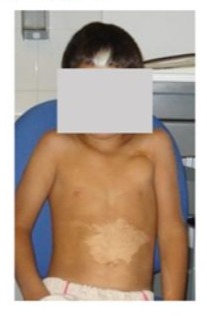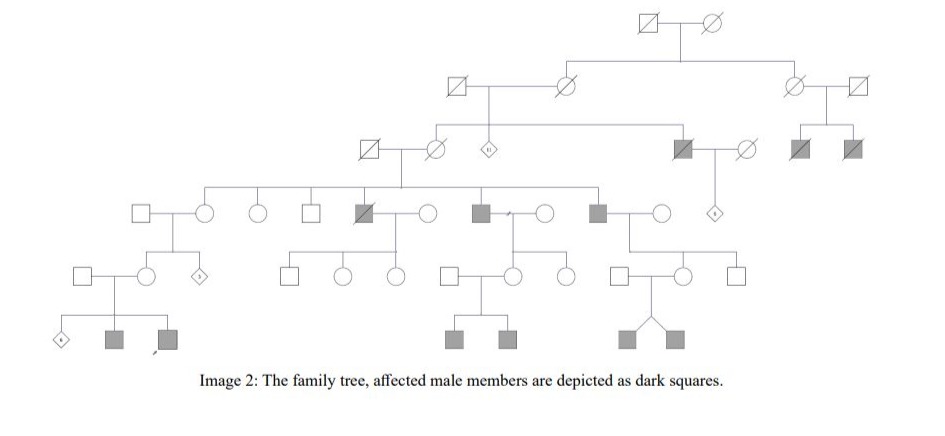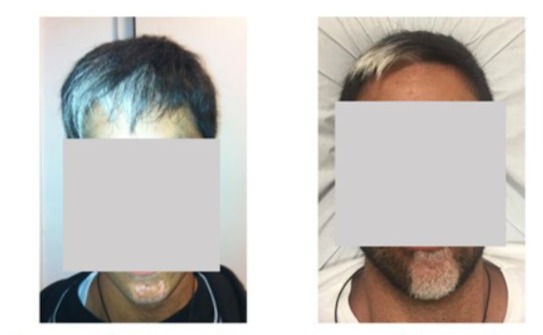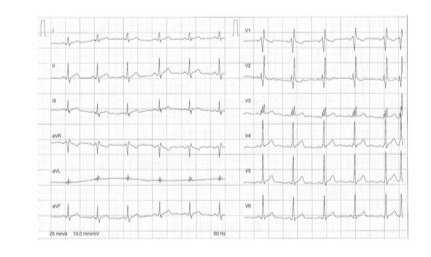Inherited Heart Conduction Disorders with Skin and Hair Hypopigmentation
by Μarios Ioannides1, Lambros Kipris2, Gregory Papagregoriou3, Constantinos Deltas3,4*
1Cardiology Department, Nicosia General Hospital, Cyprus
2Private Cardiologist, Nicosia, Cyprus
3biobank.cy Centre of Excellence in Biobanking and Biomedical Research, University of Cyprus
4School of Medicine, University of Cyprus, Nicosia, Cyprus
*Corresponding author: Constantinos Deltas, University of Cyprus Medical School, and biobank.cy Center of Excellence in Biobanking and Biomedical Research, 1 Panepistimiou Avenue, 2109, Nicosia, Cyprus
Received Date: 01 August 2024
Accepted Date: 06 August 2024
Published Date: 08 August 2024
Citation: Ioannides M, Kipris L, Papagregoriou G, Deltas C (2024) Inherited Heart Conduction Disorders with Skin and Hair Hypopigmentation. Ann Case Report. 9: 1924. https://doi.org/10.29011/2574-7754.101924
Abstract
This report describes a family with several male members having hypopigmentation in some areas of their skin and hair, and right bundle branch block on the electrocardiogram. Gradually, in a few of them, the conduction abnormalities evolve into a complete atrioventricular block requiring pacemaker implantation. The family pedigree shows an X-linked pattern of transmission of this combination of clinical abnormalities.
Keywords: Hypopigmentation; Conduction Abnormalities; Right Bundle Branch Block; X-Linked.
Introduction
This is the case of a novel “syndrome” consisting of an X-linked right bundle branch block with skin and hair hypopigmentation. A number of these patients develop atrioventricular block.
Case Presentation
An 18-year-old male presented at the Cardiology Department of Nicosia General Hospital, Cyprus after a near-fainting episode. His cardiac examination was unremarkable though general examination revealed hypo pigmented areas of his skin and a white forelock. The electrocardiogram (ECG) showed Right Bundle Branch Block (RBBB) and on the monitor, short periods of complete atrioventricular block (CAVB) were detected. The blood tests and the echocardiography study were unremarkable. Eventually, a permanent pacemaker was implanted. He has a brother, four years younger (Image 1), with the same hypopigmentation and white forelock who developed CAVB at the age of 6 and had a pacemaker implantation. The family pedigree (Image 2) was constructed and we subsequently examined 49 members of the family and performed ECGs and echocardiography study.
On clinical examination skin areas with hypopigmentation and a median white tuft of hair were detected in six male subjects in total (Images 1,3). According to family history, two subjects with sudden cardiac death many years ago were identified with similar lesions. Furthermore, all the affected members revealed right bundle branch block morphology on the ECG (Image 4). A pacemaker was implanted in four patients because of a complete atrioventricular block. The blood tests, neurological, eye examination, and echocardiography study were unremarkable in all family members. Genetic testing with whole exome sequencing was performed in two females who are first cousins, and their respective three affected sons. Detailed analysis of sequences on the X-chromosome failed to identify convincingly a pathogenic variant that could explain the segregation with the phenotype. It is probable that the DNA lesion is such that it is usually missed with this technology (large deletions or insertions) or that it is located in genomic regions not normally covered by whole exome sequencing.

Image 1: The typical while forelock and skin depigmentation. A pacemaker is implanted on the left side.

Image 2: The family tree, affected male members are depicted as dark squares.

Image 3: Two affected members with the characteristic white forelock and skin depigmentation.

Image 4: Affected members have RBBB on the 12 lead ECG.
Discussion
The family pedigree demonstrates X-linked pattern of inheritance. To our knowledge, this is the first report of heart disease manifested by conduction abnormalities in combination with skin lesions-depigmentation which is transmitted by X-linked form of inheritance. Most X-linked diseases associated with heart disorders are combined with myopathy [1] and neurological deficits [2]. However various syndromes with similar skin lesions like Waardenburg syndrome [3] are related to serious birth defects and mental retardation and are not transmitted through X-linked manner. White forelock is associated with Waardenburg syndrome [4] which commonly combines other malformations and symptoms ie hearing loss and different colour of the eyes. A rare disease with very similar clinical manifestations is Piebaldism, with the characteristic white forelock and skin depigmentation [5]. Piebaldism is an autosomal dominant disorder due to mutations of the c-kit gene located on Chromosome 4q12. No ECG abnormalities are correlated with this disorder.
Conclusion
This case report describes a novel clinical phenotype that have not been previously documented in the literature.
Disclosure
The paper is not under consideration elsewhere. None of the paper’s contents have been previously published. All authors have read and approved the manuscript. No relationship with industry. No conflict of interest for any of the authors. Written informed consent was obtained from the patients for publication of this case report, including accompanying images.
References
- Giuliani L, Di Toro A, Urtis M, Smirnova A, Concardi M, et al. (2022) Hereditary muscle diseases and the heart: the cardiologist’s perspective. Eur Heart J Suppl. 22:E13-E19.
- Sanna T, Dello Russo A, Toniolo D, Vytopili M, Pelargonio G, et al. (2003) Cardiac features of Emery-Dreifuss muscular dystrophy caused by lamin A/C gene mutations. Eur Heart J. 24:2227-2236.
- Waardenburga PJ (1951) New Syndrome Combining Developmental Anomalies of the Eyelids, Eyebrows and Nose Root with Pigmentary Defects of the Iris and Head Hair and with Congenital Deaf-Ness. Am J Hum Genet. 3:195-253.
- Mehta M, Kavadu P, Chougule S. (2004) Waardenburg syndrome. Indian J Otolaryngol Head Neck Surg. 56:300-302.
- Agarwal S, Ojha A. (2012) Piebaldism: A brief report and review of the literature. Indian Dermatol Online J. 3:144.
© by the Authors & Gavin Publishers. This is an Open Access Journal Article Published Under Attribution-Share Alike CC BY-SA: Creative Commons Attribution-Share Alike 4.0 International License. Read More About Open Access Policy.